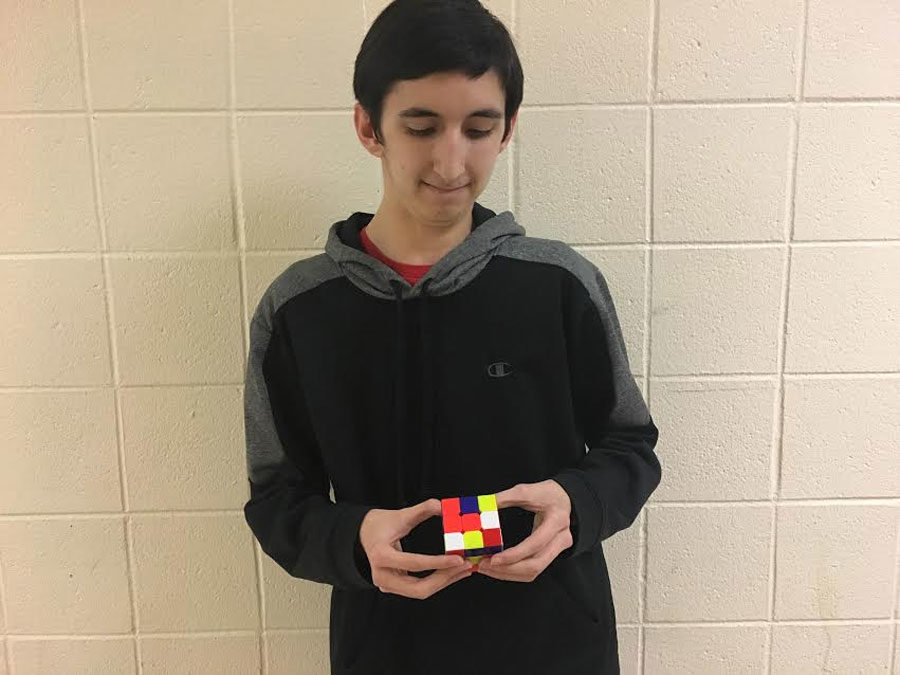Twisting it up cube style
Hunter Burgon applies a “layer by layer” philosophy to the cube and life
The Rubix Cube is a 3-D combination puzzle that has 43,252,003,274,489,856,000 different solutions. Many struggle to find even one of the vast ways to color coordinate each of the cube’s 6 sides. It is a skill few people attempt to accomplish, but one of the select few is Wakefield Junior Hunter Burgon.
“I started solving Rubix Cubes over three years ago,” Burgon said. “It’s great because it always gives me something to do when I’m bored or if I’m not busy at the moment.”
For Burgon, Rubix Cubes have been the perfect hobby and a way to keep himself busy. With there being a plethora of different kinds of cubes on the market, he never runs out of new challenging puzzles to solve.
“By far my favorite cube is the three by three cube, but surprisingly there are hundreds maybe even thousands of unique forms of Rubix puzzles,” Burgon said. “It’s all about giving yourself time to figure[the new puzzle] out, and I believe anyone can do it”
Burgon’s talent for Rubix Cubes is a great way to break the ice when meeting new people. The uniqueness of his hobby is interesting to those around him. Recently, he has inspired faculty member Emmanuel Lipscomb to attempt to complete his first cube.
“Solving Rubix’s Cubes does not take knowing some kind of special knowledge,” said Burgon. “Anyone can do it. For example Mr. Lipscomb began trying to solve a cube and within a week of working on it during Pride Time, he completed it.”
Rubix cube solving is a skill that evolves over time. It takes constant adaptability and ability to push through the frustration that lends itself through the concentration needed to complete it. Burgon believes there is no secret to Rubix Cube solving, but there are methods and steps that one can take to improve.
“There are four basic steps I take when trying to solve a cube,” Burgon said. “These steps help me evaluate the puzzle I am trying to solve and then perform the twists I need to complete it. The best advice I can give is to try to solve a cube layer by layer and not one side at a time.”
This method of solving problems “layer by layer” is one that Burgon has applied to everyday life. By having to work hard at a specific skill, he has learned to understand the importance of practicing and sticking with a task in order to improve on it.
“I just keep practicing because I want to keep getting better,” Burgon said. “Currently I average 20-25 seconds, but my personal best is 16.5 seconds. There are actually a lot of rubix cube completions and I hope to do them in the future.”
Burgon truly has a unique hobby that has driven him to work hard and has led him to become Wakefield’s master of the cube.
“I will continue to solve cubes because I really do enjoy them,” Burgon said. “I don’t see myself stopping anytime soon.”








